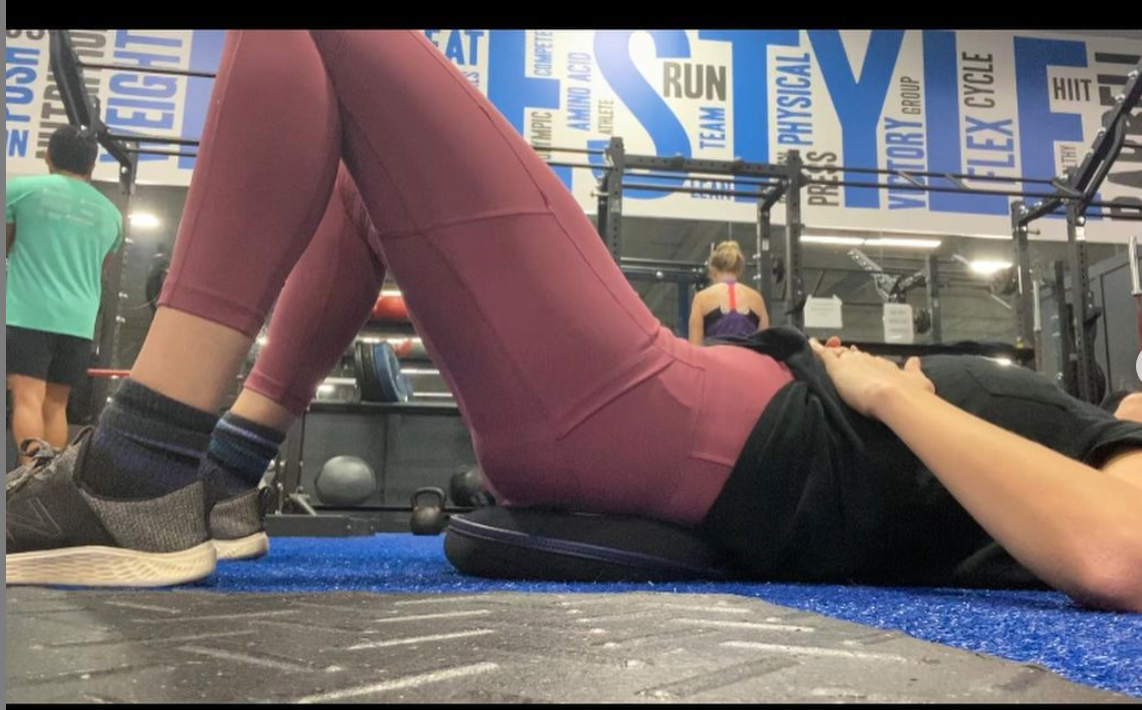My Top 3 Pelvic Organ Prolapse Tips

This is a blog post I wrote for MAMASTEFIT prior to a webinar all about prolapse I did for them! While the webinar is over now, I think sharing these tips are still so important and excited to share with you on my blog! Gina and mamastefit have been so kind to have be delivery webinars on their platform. They do a webinar on various topics weekly, and I often deliver a webinar once a month!
The NEXT webinar I will be doing MAY 11th with Addie Holzmann! My co-host of The Don't Beat Around the Bush Podcast and pelvic floor PT bestie. We will be covering all things SEX! And cant wait! If you're interested you can sign up HERE
But, back to prolapse!
Pelvic Organ Prolapse is a complex diagnosis and there are many factors at play in terms of the causes of prolapse. Therefore, the detailed ways we would then approach treatment of prolapse are going to be unique to the person.
HOWEVER, this does NOT mean that you can’t start some things today, without an individualized PT evaluation and treatment plan to help your prolapse begin to heal today.
In the webinar hosted by mamastefit we dove into MANY more concepts, tips and tricks and strategies for prolapse- but here is a “teaser” of sorts of my top three strategies to decrease symptoms of prolapse today!
- GET YOUR PEEING AND POOPING UNDER CONTROL!
Pushing your pee out and chronically straining for poops increases the pressure on your pelvic floor and pelvic organs significantly.
Daily movement, eating adequate fiber, staying properly hydrated, proper breathing mechanics using your squatty potty and learning to relax your pelvic floor for complete emptying of your bowel and bladder can made a HUGE impact on your prolapse symptoms!
2. LEARN TO TRUST YOUR PELVIC FLOOR THROUGH IT’S FULL RANGE OF MOTION
One of the first things women do when they are told they have POP is start to “clench” their pelvic floors- the fear or thought that something is going to fall out of the vagina, or the feeling of that it might causes this compensatory “tightening” but this in itself can cause more symptoms and actually increase prolapse. Just like any muscle in the body our pelvic floor muscles need to both lengthen and shorten to work effectively.
Learning to “unclench” with prolapse can be difficult because being upright increases the feeling of pressure down. Starting with inversions can be great to take that pressure off the pelvic floor so you can learn to connect with both the lengthening and lifting of the pelvic floor before you progress to more upright positions. This will then gradually transfer into day to day activities
A modified version of a forward leaning inversion, legs up the wall or laying supine with support under pelvis are some of my favorite positions to start to feel this
- CONSIDER INTERNAL OR EXTERNAL SUPPORT to “BRIDGE THE GAP” AS YOU GET STRONGER
There are products that exist that are made to help decrease the symptoms of prolapse.
Internal supports include:
Pessaries, The Poise Impressa, a menstrual cup or disc or even a tampon
For some people placing these inside the vaginal canal help keep the pressure of the bladder or rectum out of the vaginal canal decreasing symptoms and making it easier to learn to connect to the pelvic floor, and possibly do some higher level strengthening/impact.
Pessaries need to be fit by a UROGYN/or Female Urologist but the other products you can get without a doctor.
External supports include:
The V2 support, Pelvic Floor Press, or compression shorts or systems like the mamastrut system
These can be helpful for symptom relief also so that you can do your day to day activities or exercise.
To me, we want to use these products as a “bridge” not a crutch. In order to help you overcome fear or symptoms so you can strengthen, become stronger and need them less and less over time!

All of these items are available at my AMAZON AFFILIATE STOREFRONT
* I receive a small commission on purchases made through these affiliate links*
BONUS- SEE A PELVIC FLOOR PT
If it is accessible to you, always, getting evaluated by a pelvic floor PT who can do an internal PFM assessment is going to exponentially help you on this journey. It can be sometimes difficult to separate the symptoms of pelvic floor tension/dysfunction from prolapse itself and so having that evaluation to know EXACTLY what is going on in your body will give you so much good information about how to progress exercise, properly connect to core, breathing and pelvic floor muscles as well as helping you feel confident in your body again!
If you would like to work with me 1:1 the link to do that is HERE

